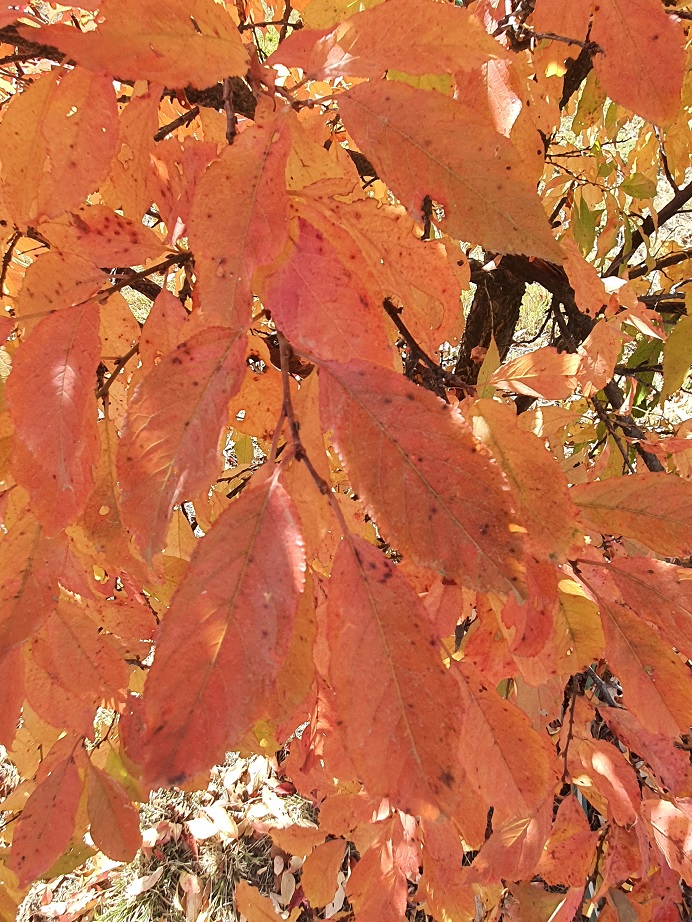
06 May Autumn Leaves
Autumn colours of Pistacia chinensis

Fallen Poplar leaves
We are now in the full swing of the autumn foliage season.
The change in leaf colour is all due to a chemical process which takes place as the seasons change. During the warmer months the leaves have played an important part in providing all the trees food for its growth.
This food production process is happening in all cells of the leaf including the chlorophyll cells – these are the cells that give the leaf its green colour. Also, within the leaf there are other pigments that are yellow or orange however during the warmer months their colour is hidden by the larger number of green chlorophyll cells.
When the autumn weather starts the tree’s food making process stops due to the cooler temperatures and lower amounts of sunlight. The green chlorophyll cells in the leaves start to break down unmasking the other pigments in the leaves of yellow and orange. Also, at this time other chemical changes in the leaf happen which then cause other colours to develop within the leaves such as purple and red. The spectrum of colours you see in the leaves vary from tree to tree due to the varying amounts of the chlorophyll residue and other pigments in the leaf.
The autumn colour will also be affected by the water supply, temperatures and amount of light each tree will receive. A period of dry weather through Summer will delay the arrival of autumn colours. If we have a warm rainy start to autumn, then the autumn colours will be lower in intensity. A severe frost will kill off the leaves causing them to drop early. The best conditions for spectacular Autumn foliage is a warm, wet spring followed by a summer that’s not too hot or dry, and then an autumn with plenty of warm sunny days and cool nights.
Many of my clients are unsure as to what to do with their deciduous leaves. They ask me these three questions the most.
Can I leave them on the lawn ?
Overall, it is not ideal to leave a large mass of autumn leaves on your grass as they will end up smothering the lawn – cutting out light to the leaf blades of the lawn which in turn will cause it to rot – this will open the lawn up to weed growth.
Can I spread them directly onto the garden beds?
When you rake them up, it is not ideal to spread directly onto garden beds as you will find that you don’t get your monies worth by doing this. The leaves in windy conditions will blow away and you miss the opportunity for them to break down and add organic matter to your soil.
What is the best way to deal with the Autumn leaves?
The best thing to do is rake those leaves up as they make a great addition to your compost bins. You can either store them in bags or buckets for 6 months or so and let them compost down or you can put them through a shredder or chipper and then use as mulch or add to a compost bin. The other thing you can do is run your mower over the top of the fallen leaves (if the layer is not too thick). You can take off any bags or catchers from your mower and keep it on a slightly higher cut, then run over the leaves in one direction and then again at right angles to the original cut. Then leave the leaves on the ground. This will only work if the amount of leaf litter isn’t too thick. This will compost leaves down to almost a tenth of their size making them into particles which are easily digested by worms, bacteria and other tiny soil organisms. In fact, according to the farm and diary website “a healthy earthworm population is capable of dragging a one-inch layer of organic matter down into their underground burrows in just a few months. Unseen by human eyes, they are diligently loosening and enriching your soil, and feeding the roots of your lawn for free”
This is a great way of dealing with your autumn leaves.
Also some people do have mulching mowers which will suck the leaves up into the catcher, mulch them up and then you can spread the mulched leaves into your compost bin or over garden beds.
Whatever you do please don’t throw your deciduous leaves in the green waste bins – this is just a lost opportunity for you to improve your soil.

Autumn leaves of Crab Apples



